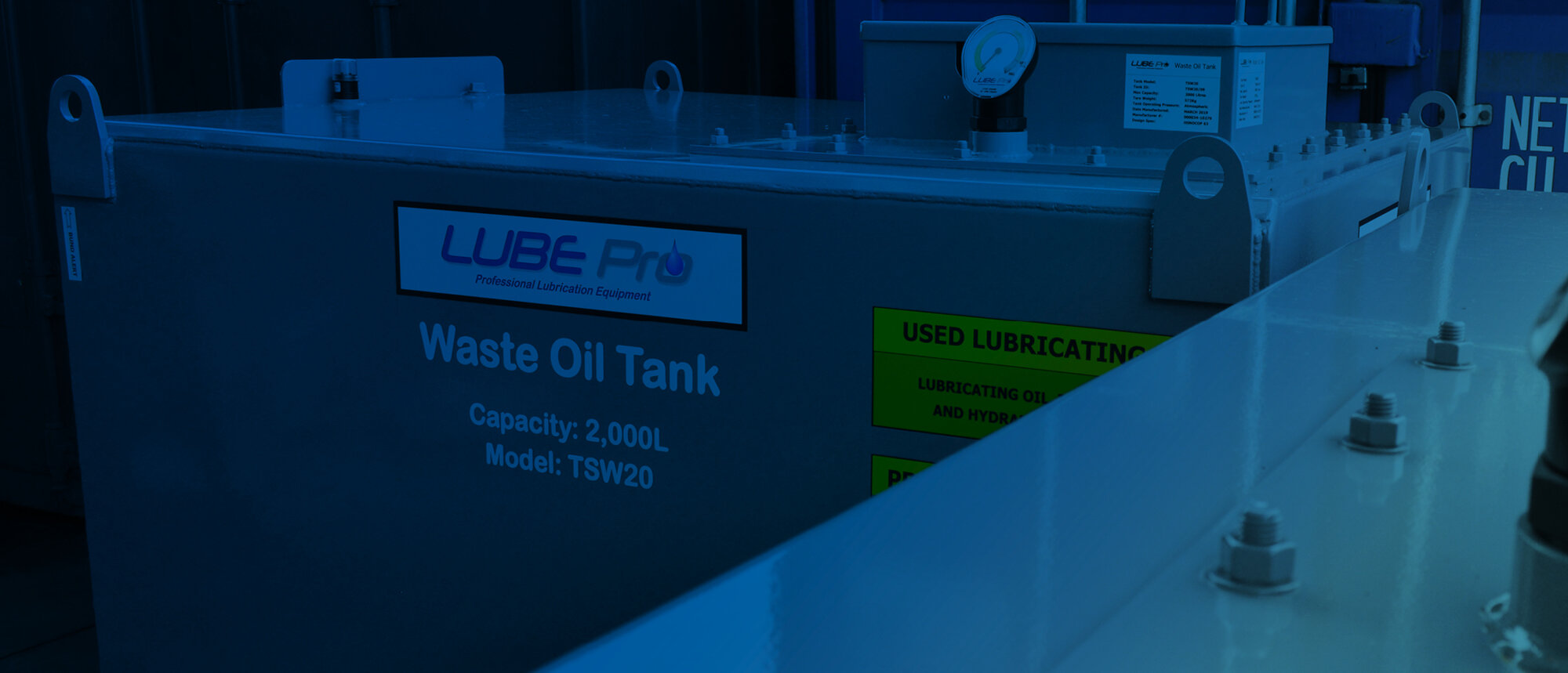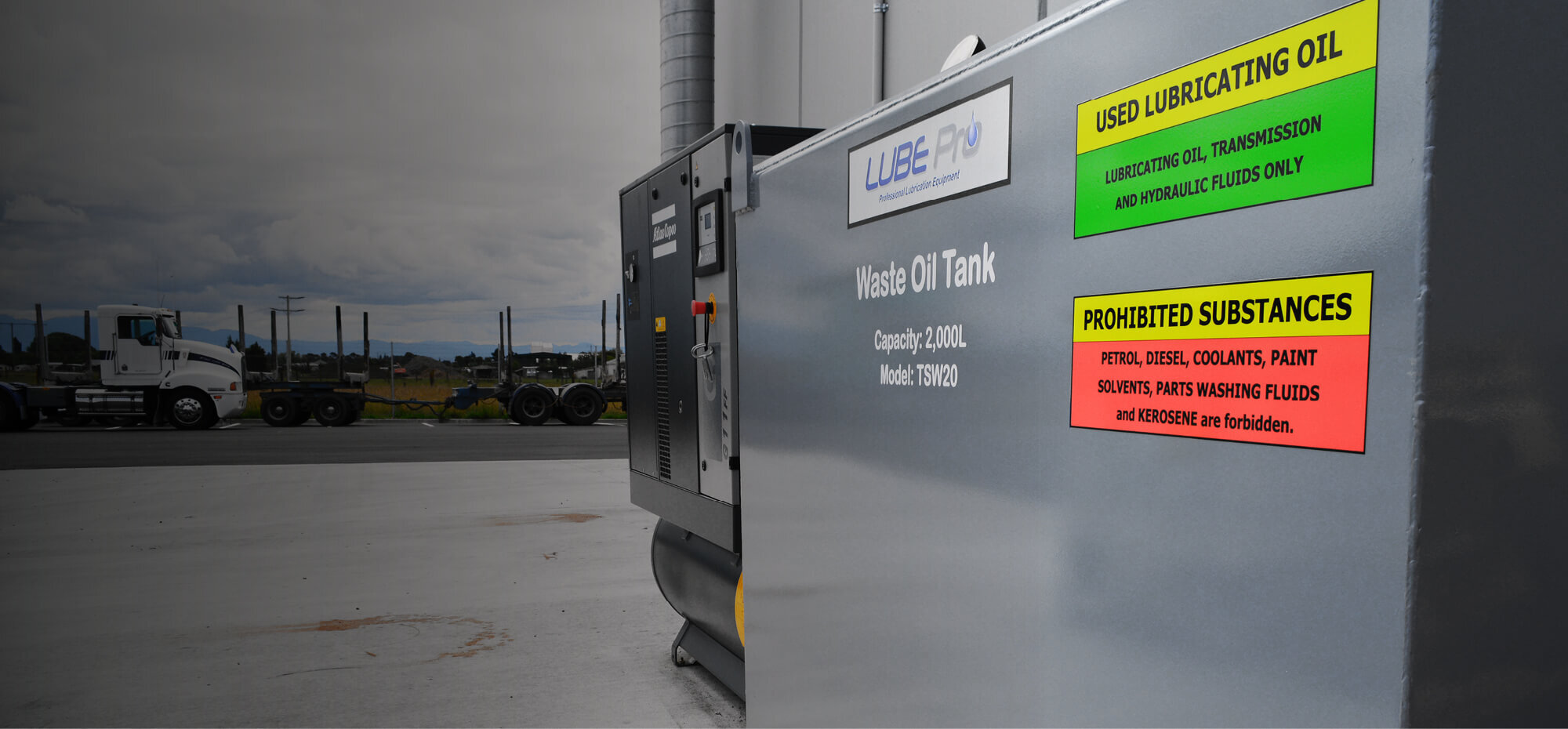
Waste Oil Management
Waste Oil Management | Waste Oil Tanks | Tank Level Alert Systems | Waste Oil Basins and Trays | Waste Oil Drainers & Accessories
Advance Fluid Control is New Zealand’s leading supplier & installer of specialist fluid transfer equipment and fluid management systems for mechanical & industrial workshops and applications.
One of the most important and often overlooked aspects of any workshop set up is the handling and management of waste oil.
With the storage and containment of waste oil having attracted particular attention from authorities in recent years due to the potential for environmental pollution, and some workshops unfortunately having sub-standard storage practices, authorities are now monitoring this aspect of the industry more closely, and rightly so. The compliance and management of waste oil tanks and systems in workshop premises is now of the highest priority.
AFC has the range of quality equipment, solutions and understanding to help any workshop get on top of its waste oil management.
Waste Oil Tanks
Whether it’s our double-skinned TSW range of steel tanks which are manufactured as two tanks in one, or our 1000L plastic waste oil tanks, all of our tanks comply with the strict New Zealand legislation which applies to any sites with waste oil storage.
Tank Level Alert Systems
Designed for preventing overflow of holding tanks, the Lube Pro Tank Level Alert System is a must have for avoiding over filling of waste oil & waste coolant storage in workshops.
Waste Oil Basins and Trays
Specifically designed for the catchment of waste oil – our range of waste oil basins and trays allows for an easy, clean and hassle free solution to draining oil filters, containers, funnels, etc.
Waste Oil Drainers & Accessories
As with all mining, commercial, agriculture and automotive workshops, the need for dependable day-to-day Waste Oil equipment is essential, And having the right equipment can be make or break for any workshop.

7 Key Points for Sites with Waste Oil Storage
1. Spill Control
Sites with waste oil storage must have a spill kit that is appropriate for cleaning up used oil. This should contain personal protective equipment (PPE), spill handling equipment, containment equipment, absorbent materials and information on what to do when a spill occurs.
2. Sites with Waste Oil capacity of 500L or more
If the site has capacity for 500L or more of waste oil, there must be at least 2 fire extinguishers on site. Maximum storage in plastic tanks is 1000L per site. Double skinned steel tanks provide solutions for storage of more than 1000L.
3. Secondary Containment
Each tank is required to have a secondary system with at least 110% capacity of the largest storage tank on site. This can be achieved by utilising a self-bunded tank, a single skinned self-bunded tank, or a single skinned tank in a suitably sized bund.
4. Evacuation Plan
A documented evacuation plan is required.
5. Signage
a) The location where the tank is must have prominent signage to demonstrate the allowed substances for the tank, as well as signage showing prohibited substances. Our waste oil tanks come complete with the approved signage to meet this requirement.
b) Where the tank capacity is 1,000L or more, a Warning or HAZCHEM sign which is able to be read from a distance of 10m is required which contains the hazardous substances present, the hazardous properties of these substances, precautions to prevent unintended ignition, and actions to be taken in the event of an emergency.
If the used oil is located in a building, these signs must be positioned at every vehicular and pedestrian access to the building and at each entrance to any room or compartment inside the building which the used oil is located in.
As this is usually region and site specific, we do not supply this with the tank.
See example of a suitable sign.
6. Staff Training
Written material must be provided to staff about the appropriate procedures for handling used oil and oil filters. Safety datasheets must be available.
7. Emergency Response Plan
An emergency response plan is required if your site holds more than 1,000L of waste oil. Emergency response plans must be site specific and cover all reasonably likely occurrences and the responses for your site.





